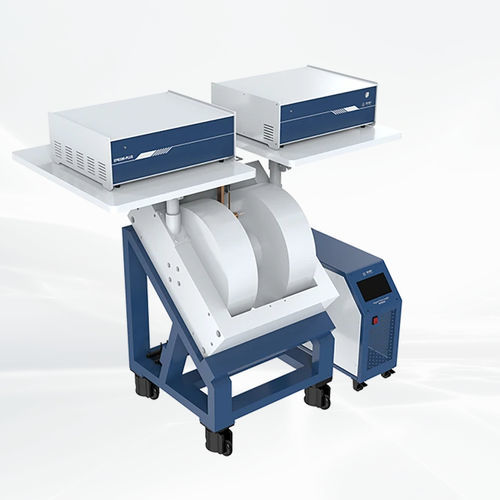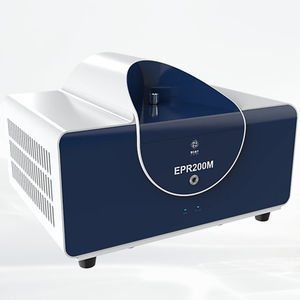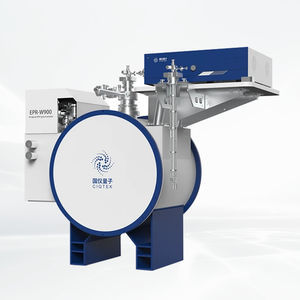

- Products
- Catalogs
- News & Trends
- Exhibitions
Optical spectrometer EPR200-PlusEPRfor biomedical researchbenchtop
Add to favorites
Compare this product
Characteristics
- Type
- optical, EPR
- Applications
- for biomedical research
- Configuration
- benchtop
Description
Electron paramagnetic resonance (EPR) or electron spin resonance (ESR) spectrometer is a powerful analytical method to study the structure, dynamics, and spatial distribution of unpaired electronics in paramagnetic substances. It can provide in-situ and non-destructive information on electron spins, orbitals, and nuclei at the microscopic scale. EPR spectrometer is particularly useful for studying metal complexes or organic radicals so it has important applications in the fields of chemistry, materials, physics, environment, and medicine.
*Accessories: Liquid nitrogen variable temperature with cryostat; Liquid helium variable temperature; Sample tubes; Goniometers; Electrolytic cell; Irradiation system; Flat cell.
Features
Diversified Experiment Scenarios
It can be equipped with an in-situ optical stimulation system, liquid nitrogen liquid helium cryogenic system, high-temperature system, automated goniometer system, electrochemical system, etc. to meet the needs of multi-scene experiments.
Built-in Calibration
The built-in Mn standard for accurate quantitative EPR calculations and g-value correction calculations, and the detachable assembly allows for easy switching between unlabeled and labeled tests.
Absolute Quantitative EPR Technology
The absolute quantification of unpaired electron spins can be used to easily, quickly, and directly obtain the spin number of unpaired electrons in a test sample without the use of a reference or standard sample.
Related Searches
- Microscopy
- Compound microscope
- Tabletop microscope
- Spectroscope
- Digital microscope
- Biological microscope
- Benchtop spectroscope
- High-definition microscope
- Compact microscope
- Medical microscope
- Compact spectrometer
- Optical spectroscope
- Research spectroscope
- High-resolution spectrometer
- Clinical microscope
- Laser microscope
- AFM microscope
- Fiber optic spectrometer
- Spectrometer for life sciences applications
- NMR spectrometer
*Prices are pre-tax. They exclude delivery charges and customs duties and do not include additional charges for installation or activation options. Prices are indicative only and may vary by country, with changes to the cost of raw materials and exchange rates.



